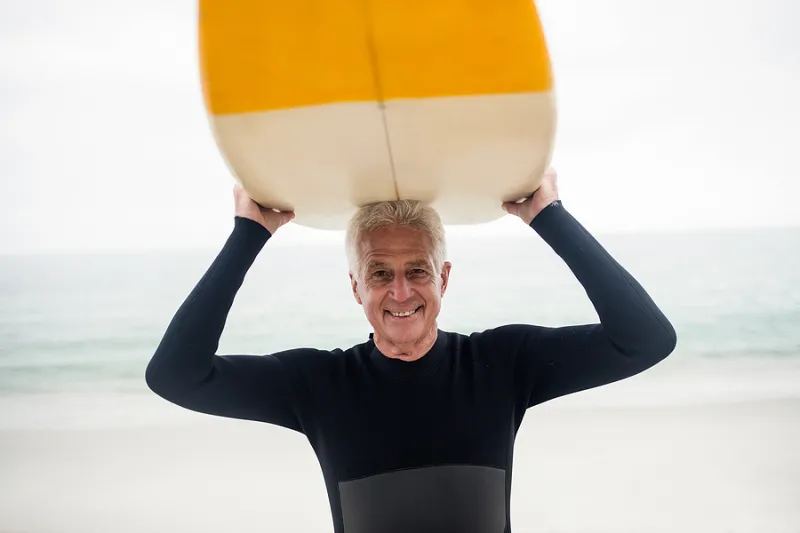Alberta man hopes $1.2-million net worth will go further in Mexico retirement
There are many unknowns in this income forecast

Rick, a petroleum analyst from Alberta, plans to spend his retirement in a warmer climate with his partner, Jane.
In Alberta, a petroleum analyst we’ll call Rick, age 56, wants to retire at 60 to a warm country — most likely Mexico. He earns $144,000 per year and takes home $7,260 per month. Rick moved to Canada in 2004 but his companion, Jane, 43, is not a resident of Canada and does not work, invest or receive any public benefits here — she does not even have a Social Insurance Number.
Rick is a diligent investor and has built a net worth of $1,238,000. His house accounts for $900,000 of that and has a $175,000 mortgage. The balance of assets consists of $227,000 in RRSPs, $175,000 in his TFSA and $130,000 in taxable investments. He has a $24,000 loan outstanding.
Family Finance asked Derek Moran, head of Smarter Financial Planning Ltd. in Kelowna, B.C., to work with Rick. There are problems, he explains, in transitioning to retirement. Rick’s house is 63 per cent of his total assets and 73 per cent of his net worth. That’s not only a big commitment to one asset class — it is also an illiquid asset.
Building income
Rick thinks he might make a permanent move to Mexico, where the cost of living is approximately half of what it is in Canada.In retirement, Rick can count on $16,800 per year from a defined-benefit pension from a former job. It is not indexed to inflation and has no medical or drug benefits and CPP of $8,274 at 60 or $10,154 at 65. We’ll assume he takes the latter.
Rick moved to Canada at age 38, so at 65 he will be able to draw 27/40ths or 68 per cent of the maximum OAS of $8,000 per year which would work out to $5,440 annually. It is worth noting that if Rick works to 65 and has gross income over $81,761, the current clawback trigger point, he would be wise to defer starting OAS. OAS has a two-year look-back, so he would do well to defer the start to age 67. If he does that and gets the 7.2 per cent annual boost over his base rate, his OAS at age 67 would be $6,223 per year. Moreover, even if he does move to Mexico and becomes a non-resident of Canada, he would still receive his OAS.
The TFSA with $6,000 in additional funds contributed each year for eight years growing at three per cent per year will become $297,000 in 2022 dollars. That capital still generating three per cent per year after inflation will provide $15,424 per year for 38 years starting in eight years to Jane’s age 90.
Rick’s RRSP, including his job-based defined-contribution pension, has a current balance of $324,000. He has $39,080 of contribution space. While working, he should make the most of the space, even if he has to take that sum out of his $130,000 taxable assets for a short period before replacing it.
If he makes a one-time contribution to use up his space and puts 18 per cent of his $144,000 annual salary — or $25,290 per year — in and the total grows at three per cent per year after inflation for nine years to his age 65, it will become $738,400 and then support withdrawals of $31,872 per year for 38 years to Jane’s age 90.
Rick’s $130,000 taxable investments growing at three per cent after inflation with no further contributions will become $169,630 on the verge of his retirement at age 65 and then support after-tax withdrawals of $7,320 for the 38 following years to Jane’s age 90.
The long game
There are many unknowns in this income forecast. Rick’s taxable investments will be a pool for adding money to TFSAs. Jane’s tax status in future is unknown. If she becomes a resident, obtains a Social Insurance Number and files a return, she will be able to split qualifying income with Rick and so lower their average tax rate.If we assume that Jane will have no investments or income of her own, then before Rick is 65, he will have a job pension of $16,800 per year, $10,154 in CPP taxable income, $31,872 from his RRSPs, $15,424 from his TFSA and $7,320 from taxable investments. That is a sum of $81,570. Assuming that Jane does not become taxable as a resident of Canada, then after average tax at 21 per cent on all but TFSA income, he would have $67,679 in annual disposable income or $5,640 per month. If present debt service charges of $2,366 per month have ended with payment of all outstanding debts and all savings ended, his expenses would decline to $4,894 per month. He would easily cover his cost of living.
At age 67, Rick could add his OAS with bonus in the amount of $6,223 per year, raising total pre-tax income to $87,793. After 22 per cent tax on all but TFSA income, he would have $71,870 annual income or $5,990 per month to spend.
If Jane were to become a resident of Canada, she could obtain a Social Insurance Number and file a tax return. That would allow income splitting. We have no indication that this is her plan, so we will not assume it. For now, in a financial sense, she is a tourist in Canada.
In Mexico, Rick could receive all earned Canadian benefits, but he might have to figure in the cost of travel to Canada, health insurance and the cost of moving his goods to set up a new home. The move, if it happens, could be a decade away. Before retirement, he should take accounting advice on Jane’s status in Canadian tax law, review the costs and benefits of her residence in Canada for tax purposes, and his own tax exposure in Mexico before the move, Moran says.
Retirement stars: 4 **** out of 5
Financial Post
( C) 2022 The Financial Post, Used by Permission

































